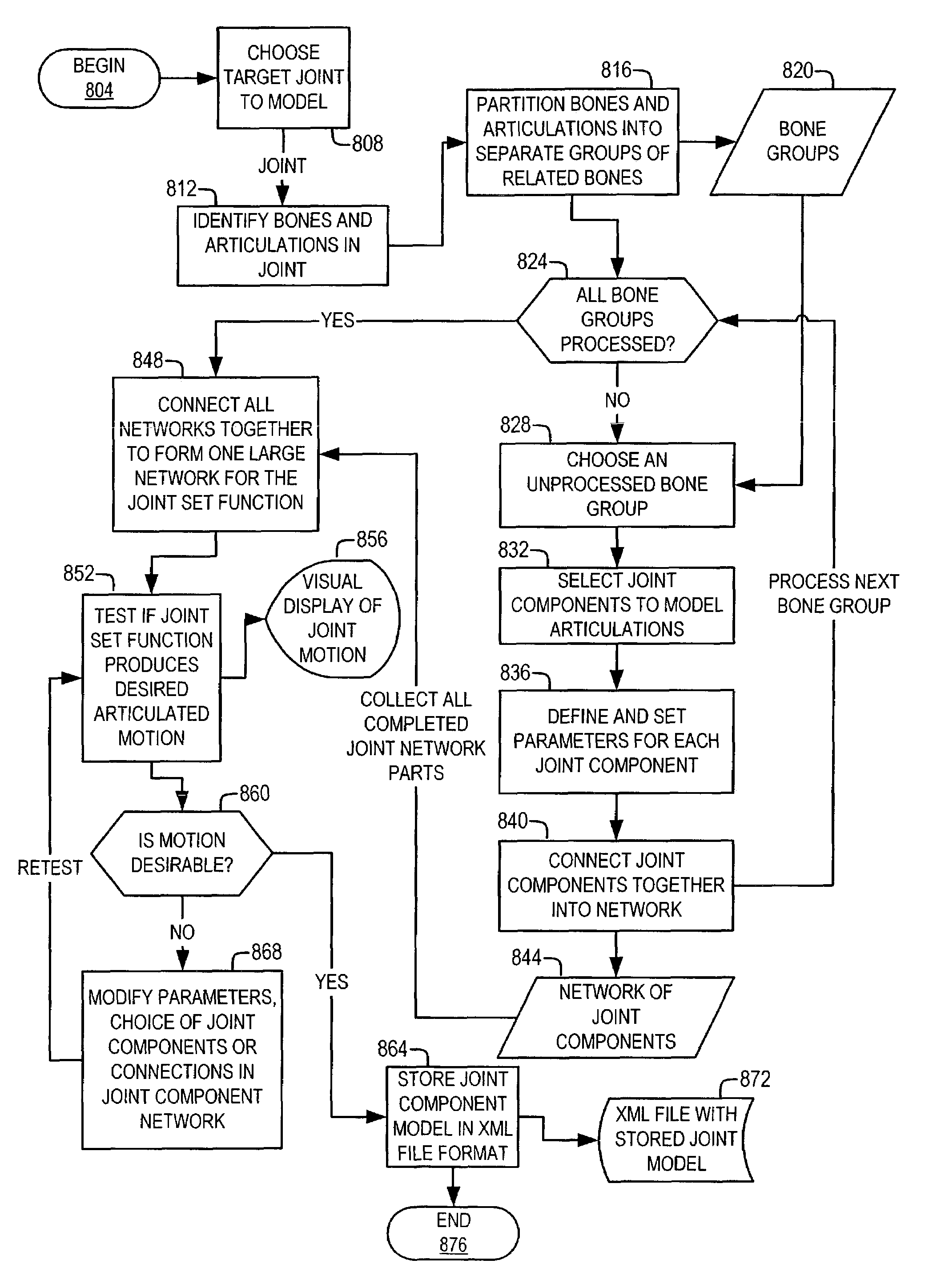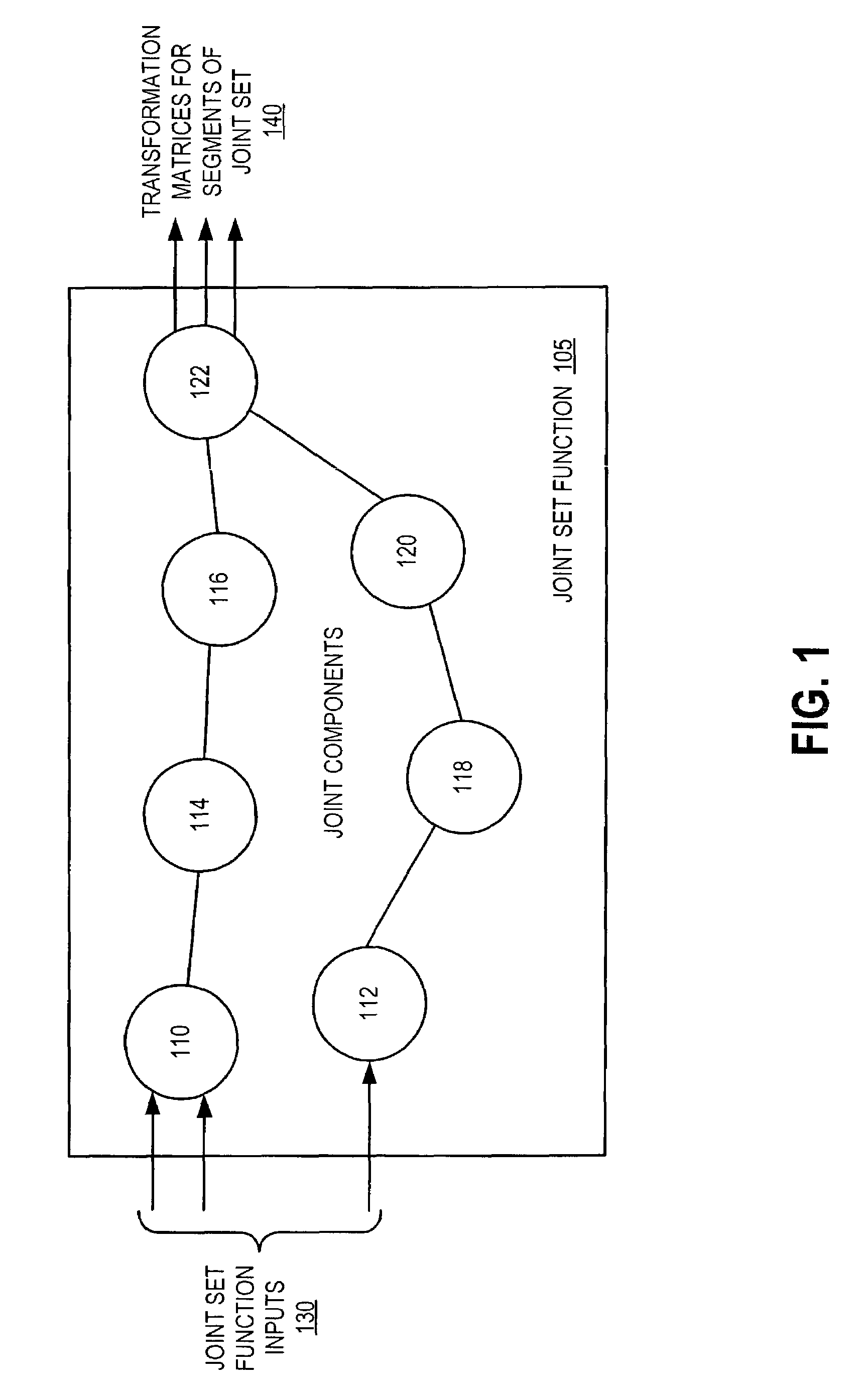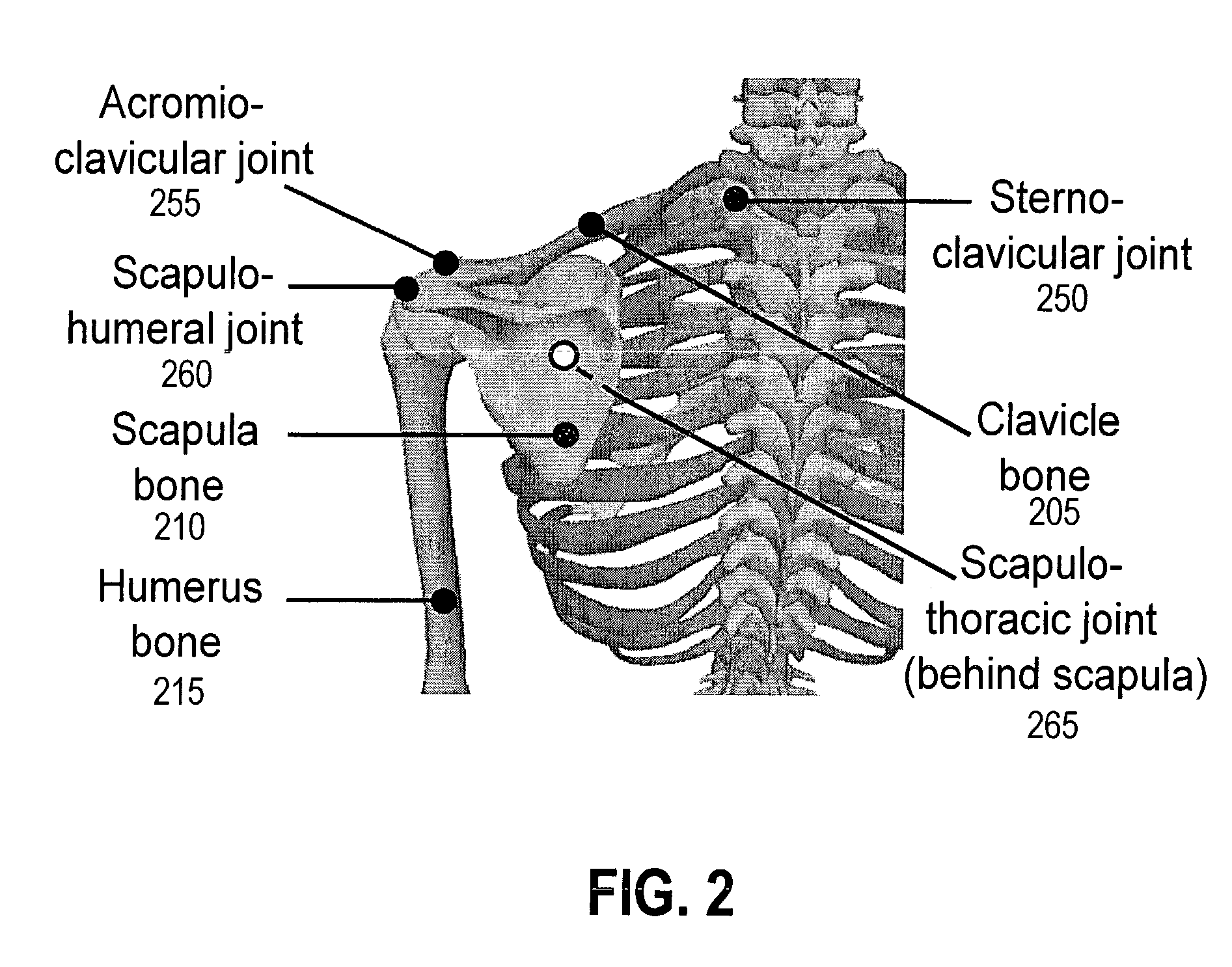Joint component framework for modeling complex joint behavior
a joint component and complex technology, applied in the field of joint modeling, can solve the problems of increasing the complexity of the user's manipulation or use of the resulting joint expression, limiting the choice of parameterization for particular orientations, and physiological joints have been shown to have many complexes, so as to achieve the effect of sufficient compactness and increasing the accuracy of the joint model
- Summary
- Abstract
- Description
- Claims
- Application Information
AI Technical Summary
Benefits of technology
Problems solved by technology
Method used
Image
Examples
Embodiment Construction
[0029]The present invention is now described more fully with reference to the accompanying figures, in which several embodiments of the invention are shown. The present invention may be embodied in many different forms and should not be construed as limited to the embodiments set forth herein. Rather these embodiments are provided so that this disclosure will be thorough and complete and will fully convey the invention to those skilled in the art.
[0030]In computer graphics applications, realistic depiction and animation of human characters is an important element contributing to the appeal and success of interactive graphics. Three-dimensional humanoids are often the physical embodiment of the interactive interface, either serving as an avatar for the player, or as representations of other autonomous characters in the virtual environment. While recent research has focused on better geometric representations, anatomy-based modeling, and pose-based skin deformation for representing an...
PUM
 Login to View More
Login to View More Abstract
Description
Claims
Application Information
 Login to View More
Login to View More - R&D
- Intellectual Property
- Life Sciences
- Materials
- Tech Scout
- Unparalleled Data Quality
- Higher Quality Content
- 60% Fewer Hallucinations
Browse by: Latest US Patents, China's latest patents, Technical Efficacy Thesaurus, Application Domain, Technology Topic, Popular Technical Reports.
© 2025 PatSnap. All rights reserved.Legal|Privacy policy|Modern Slavery Act Transparency Statement|Sitemap|About US| Contact US: help@patsnap.com



